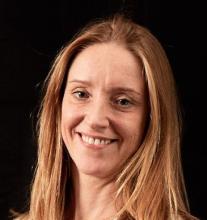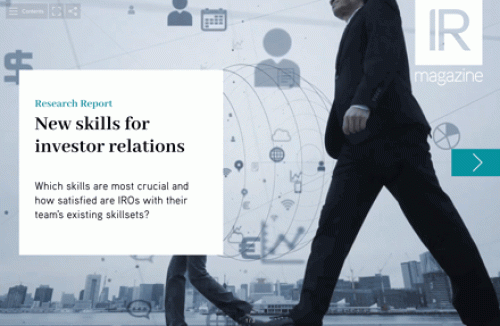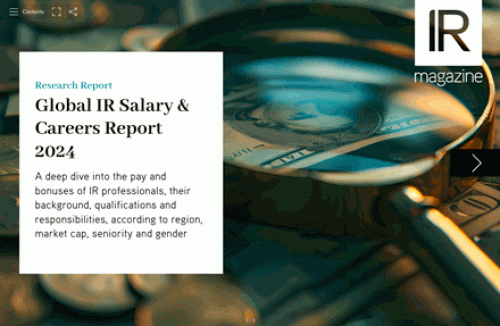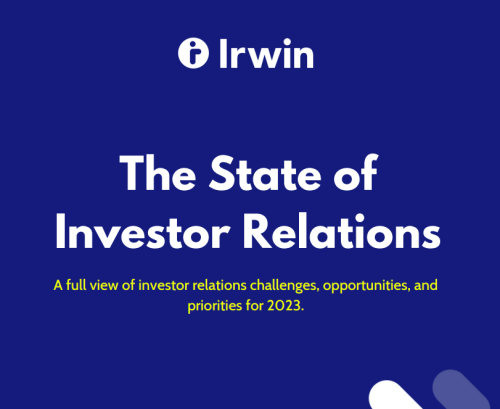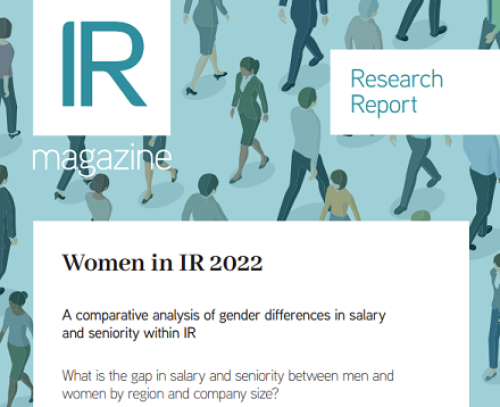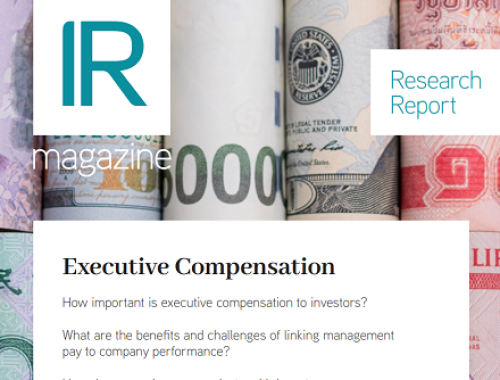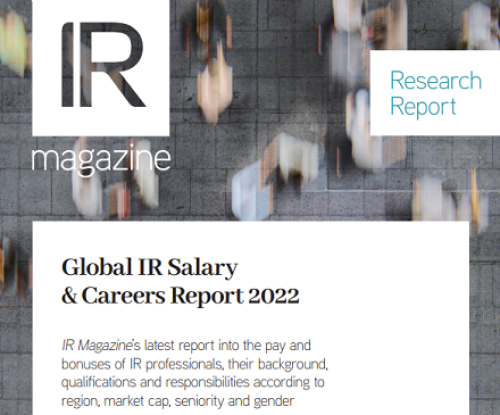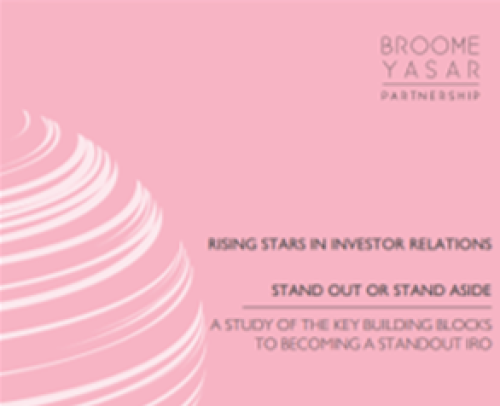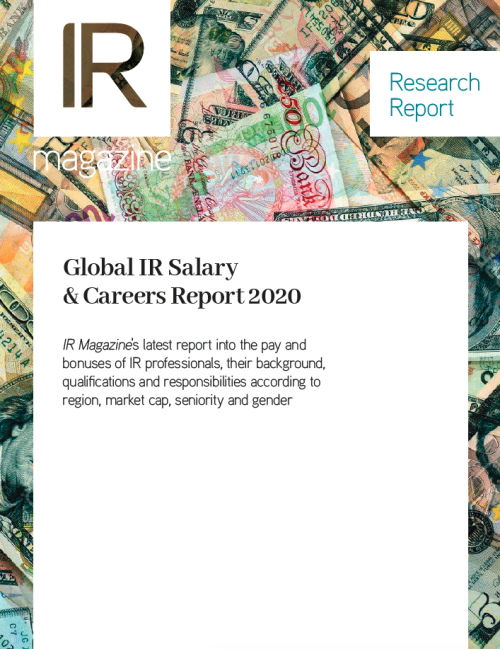TSMC veteran Elizabeth Sun doesn’t believe share price is beyond IR’s control, says Alexandra Cain
IR tends to be outwardly focused, with the emphasis on communicating and building relationships between a business and its existing and potential shareholders. This emphasis constitutes a huge part of the work carried out by Taiwan Semiconductor Manufacturing Company’s (TSMC) team, as it does at many other companies. What sets TSMC apart, however, is the IR division’s relentless quest for knowledge about the business and the incredibly complex, quantum physics-based technology in its products.
Members of the IR team undergo years of training before they are introduced to investors. and, unlike other IR departments, TSMC’s team doesn’t y around the world chasing shareholders. Rather, its focus is on the quarterly results presentation. It’s a pragmatic and successful approach: today, nearly 80 percent of the share registry comprises global institutions, with the remainder Taiwanese investors.
TSMC, started in 1987, was the world’s first pure-play semiconductor foundry. Semiconductors transfer energy through electronic circuits. They are in your phone, computer and Tv; they’re in your car, your fridge and your washing machine. The modern world could not run without them. Last year, TSMC made around 9,000 different products to order for its approximately 470 clients. Sales in 2015 were $26.6 bn and the business is capitalized at around $155 bn, putting it in the mega-cap category.
Meaningful and measured
The firm’s senior director of corporate communications, Elizabeth Sun, is a rock star in investor relations circles, winning numerous IR Magazine awards – both personally and for the company as a whole – since she stepped into the IR role in 2003.
IR executives often balk at using share price gains as the ultimate measure of their success. The argument is that IR can’t be responsible for the share price given that so many variables, such as macro political events with the potential to wreak havoc on the share price, are out of their control. This philosophy doesn’t wash at TSMC.
‘About seven years ago I had a meeting with our founding chairman and then CEO Dr Morris Chang,’ recalls Sun. ‘He asked about our goal and I said it was to build a long-term, trusting relationship with our shareholders. Then he asked how we would measure this. I told him various metrics and standards we could employ. He said, No, that’s too complicated, Elizabeth. How you should measure it is very simple: 10 percent share price appreciation a year.
‘My initial reaction was, What? Morris is a brilliant person, but I started negotiating over whether that included dividends, for example, and he was frustrated with me. Then suddenly I understood the goal. We had just completed a ve-year growth strategy that aimed to grow revenue at a rate of 10 percent a year, with earnings growing in line with it. That’s why he gave me the mandate, because if we can deliver earnings growth of 10 percent per year we should have share price appreciation at least in line with that.’ Since then TSMC’s share price has tripled, so Sun has more than delivered.
A huge part of Sun’s role is training her team to add value for shareholders and analysts. This requires a deep understanding of the business and its industry dynamics. It’s a small team, made up of Sun, her deputy director, a manager and two other staff.
‘Our program is rst to look at ourselves, the characteristics of the industry, and the competitive position of each major player within our industry,’ she explains. ‘Then we look at our customers and suppliers and our relationship with each of them, and the dynamics they are facing. after that, we spend a lot of time continuing to study so we can provide better insight to investors.’
Changing investor landscape
The business’ addressable shareholder audience has changed considerably since Sun started at TSMC. Before 2000, the semiconductor industry was growing at a rapid rate of about 16 percent a year. This has now moderated to growth of between 3 percent and 5 percent a year, with TSMC delivering a compound annual growth rate of about 15 percent in the last five years.
Initially, Sun’s investor base comprised emerging markets investors seeking growth, but that has shifted. ‘We now have quite a few global technology funds as our investors,’ she notes. ‘In terms of investment style, Garp investors are our main investor body, but we still have a reasonable number of growth investors. We pay good cash dividends, which attract investors that want a stable, steady dividend yield.’
As the bulk of shareholders are located overseas, Sun relies on technology to communicate with them. ‘You don’t have to be on the road that much, but you do need to communicate – and the best way is to use our quarterly earnings conference and conference call wisely,’ she says.
The conference is webcast, and archived for at least six years to bene t those who can’t watch the live call; typically around 200 investors attend. The CeO and CFO deliver their messages and investors can directly question management members, who Sun helps to prepare: ‘It’s the best way to deliver key messages and put management in front of investors.’
She attends broker conferences in Taipei, Hong Kong and Singapore, which allows her to cover hundreds of investors at once. ‘I also take the IR team to Taipei to build familiarity and credibility with investors,’ she says. The IR team receives more than 600 meeting requests each year and has to reject quite a few. Sun can only physically meet with so many institutions and has to be judicious about which investors she does take meetings with.
‘I am diligent in doing shareholder profiles,’ she says. ‘not because we have activist investors but because I want to see whether our IR resources have been spent effectively. If an institution takes up a lot of resources and I nd out it has not increased its shareholdings, I will reduce my availability to that institution.
‘But if I do agree to a meeting, I put in 110 percent. I will try to understand that institution’s questions and I will put a lot of effort into addressing its issues. even if it means I have to start from a basic introduction, I will do that.’
Maintaining enthusiasm
Sun is just as fresh now as the day she started. Much of this can be attributed to her passion for the business. ‘I am so excited about the company and the industry, which has really changed in the last decade,’ she says. ‘There are new entrants and our main competitors have changed. We are still the world’s largest and most advanced semiconductor foundry but the company’s capabilities today are very different from the capabilities we had in 2003 when I rst joined the company, which is re ected in our market cap.
‘The industry dynamics, the company’s growth, being able to work within the company and have direct access to the most senior management members are what keep me excited. This allows me to see how the company develops important strategies, overcomes challenges, sets goals and reviews progress. Being able to translate all that for investors to keep them willing to stay with us and have TSMC as a core holding is so rewarding. That’s what keeps me so engaged and enthusiastic.’
|
A measured approach to disclosure As it does with all its investor relations activities, Taiwan Semiconductor Manufacturing Company (TSMC) takes a sensible approach to disclosure. every quarter, management discloses the numbers and the reasons behind them, covering any variance between the current and previous quarterly gures. While TSMC ensures it is always absolutely honest and exceeds regulatory requirements, it also places a great deal of emphasis on consistency. ‘Consistency is very important,’ explains elizabeth Sun, TSMC’s senior director of corporate communications. ‘We cannot randomly change how we disclose because investors value a high degree of predictability and reliability. Therefore, we have to carefully think through what needs to be disclosed so that we can follow it through consistently.’ |
|
Giving guidance ‘There are a lot of people using a magnifying glass to look at Taiwan Semiconductor Manufacturing Company (TSMC),’ says the firm’s senior director of corporate communications Elizabeth Sun. As a result, the business must be absolutely on point with its guidance, which it hardly ever misses. A lot of this is to do with its vast accounting resources – about 150 accountants work for the business – and management’s ability to forecast. ‘We have a fantastic internal accounting organization that understands all the business’ moving parts so it knows how all our numbers will be affected when things change,’ Sun explains. ‘The planning organization is also incredible: it uses bottom-up and top-down analysis to make both near-term and mid-term forecasts and, if there are any deviations, the staff can quickly pinpoint the issues so that the management can take appropriate action.’ This is no mean feat given that each year TSMC produces about 9,000 different products for customers using more than 200 different manufacturing process technologies. Against this backdrop, the business produces a full set of financial forecast numbers every week, which Sun nds on her desk when she arrives for work every Monday morning. These include an explanation of the difference between the current and previous versions of the forecast. They also include a review of how the business is tracking against the annual plan the board has approved. |
|
Elizabeth Sun’s five tips for investor relations success 1. Choose a good company for which to be an investor relations officer. You have to make sure your value system is aligned with the company’s or it will be very dif cult to be a true ambassador. 2. Be conscientious. I always struggle when I reject a request for a meeting. Even if I reject the meeting I will try to add value by directing the institution to the website, which has a lot of information to help develop a better understanding of our company. Be passionate about your audience, put yourself in its shoes and think about the considerations and pressures it is under. 3. Always tell the truth. You have to fully understand why you disclose certain things and why you cannot disclose other things. even if you cannot disclose certain things, you have to be able to explain why. 4. Understand the bigger picture and be able to see issues from a higher level. 5. Make sure you offer your audience more value than just providing data. If you think about a pyramid, data is at the very bottom. The next level is information, then knowledge, and the highest level is insight. deliver knowledge and insight, not just data and information. |
This article appeared in the winter 2016 issue of IR Magazine
